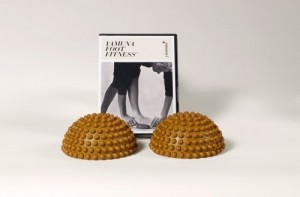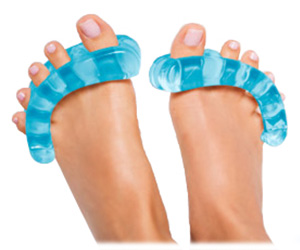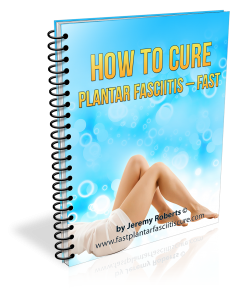Are you currently experiencing sharp PAIN, burning, or discomfort in your feet? It’s most likely a condition known as Plantar Fasciitis, also referred to as heel pain.
Plantar fasciitis is a chronic inflammation of the large fascial tendon at the bottom of the foot (plantar fascia) that connects your heel bone to your toes.
Plantar fasciitis can cause intense heel pain. The plantar fascia plays a critical role in stabilizing the foot during plantarflexion, the movement of when you hit the brake peddle in a car or stand on your tiptoes.
Plantar fasciitis pain is a common problem among runners who push off the ground.
The pain is typically worse with the first few steps in the morning and after prolonged periods of sitting or standing.
It’s thought that the prolonged muscle tension of the plantar fascia causes an overload that produces inflammation, usually at the point where the fascia is attached to the calcaneus.
Poor foot support, high arches, flat feet (pronation), bone spurs, tight calves, and the aging process are all contributing factors, according to most podiatrists and orthopedic surgeons.
Conventional medicine typically treats the symptoms of plantar fasciitis versus treating the direct cause.
Below is a list of traditional plantar fasciitis treatments that many doctors recommend:
Ice numbs the area and gives temporary relief, but it doesn’t increase circulation. So, in reality, it just slows the healing process.
Anti-inflammatory drugs carry many side effects that create the illusion that the injured muscles feel better. Next, the person feels better, so they go and use those muscles and get tighter. The pain eventually comes back.
Physical Therapy helps to strengthen muscles, but in so doing, the muscles get shorter and tighter, giving rise to more adhesions and scar tissue.
Orthotics are specially fitted shoe inserts that provide support for the foot by distributing pressure or realigning foot joints while standing, walking, or running. Orthotics allow already tight muscles to remain tight.
According to The Whartons’ Stretch Book, if you put support in your shoe, you guarantee that your ‘spring’ has nowhere to go, and your shock absorber can’t absorb shock.
It will feel good temporarily because it will relieve tension in the foot, but it will accomplish nothing long-term.
Taping can help relieve the tension in the foot, but only temporarily.
Surgery is invasive and involves slicing the plantar fascia. This causes scar tissue to develop, stronger than the original fascia. As the body heals post-surgery, the problem may come back since the cause was never addressed.
4 Chronic Plantar Fasciitis Treatment Options
Below are listed four natural solutions that will help repair and restore your feet.
Chronic Plantar Fasciitis Treatment Option #1: Deep Tissue Massage with Stretching
A combination of deep tissue massage and stretching to treat repetitive use injuries, such as plantar fasciitis, can quickly resolve chronic foot pain, especially when done weekly.
With repetitive use injuries, the muscle fibers get tighter and tighter and eventually lose their muscle memory of how it’s supposed to act in a relaxed state. As a result, there is a build-up of adhesions and scar tissue which deprive the muscle of proper blood flow and oxygen. The constant pulling from the muscle’s attachment points makes it sore and inflamed. Deep tissue massage can help to soften the rigid plantar fascia and assist in its healing process.
Chronic Plantar Fasciitis Treatment Options #2: Thera-Band Foot Roller
The Thera-Band Foot Roller provides temporary relief from the pain associated with plantar fasciitis, heel spurs, and tired feet.
You can also freeze the Foot Roller to create a better cryotherapy pain relief experience than a frozen water bottle.
You can then use a lacrosse ball or golf ball to massage and rehab sore and tired feet and use it before and after exercise to prevent and treat foot pain, heel pain, and plantar fasciitis.
Chronic Plantar Fasciitis Treatment Options #3: YogaToes
YogaToes are an effective toe stretcher that fights foot pain caused by tight shoes and high heels, being on your feet all day, and participating in sports.
YogaToes stretch the toes apart from each other, away from the ball of the foot, and down from the top of the foot. Tight, weak foot muscles become flexible and stronger.
YogaToes are doctor recommended!
Dr. John Scheerer, M.D., believes that YogaToes are indispensable for foot health.” He recommends YogaToes to all of his patients that suffer from bunions and hammertoes.
Plantar Fasciitis Treatment Option #4: Yamuna Body Rolling Foot Wakers

These hollow plastic half-spheres covered with knobbles stimulate the bottom of the foot, increasing circulation. You’ll feel the blood moving upward, energizing the rest of your body and increasing foot flexibility, muscle tone, and strength.
You can use the Foot Wakers sitting at your desk, watching TV, or relaxing. Use while standing up for increased intensity. Using these is the way to begin your footwork, especially if your feet are sensitive. Watch your feet beginning to point straight ahead.
So there you have it, four chronic plantar fasciitis treatment options.
To learn more about Plantar Fasciitis and proven techniques to treat and prevent it, the best guide is Fast Plantar Fasciitis Cure™ by exercise rehab consultant Jeremy Roberts.
This book provides the reader with a step-by-step plan of action to overcome the pain and repair the damaged foot tissue in just seven days! By following this plan, you can quickly reclaim your foot health and quality of life.
FREE E-book about How To Cure Plantar Fasciitis From Home
Click here for the FREE Download.






